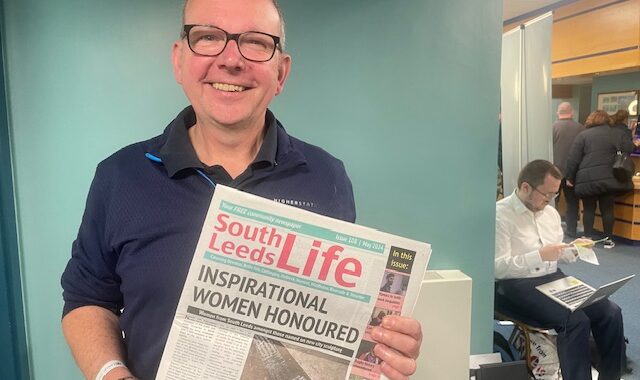Hyperlocal media is a small but significant part of the UK’s local media landscape.
With decade old sites like the London SE1 community website and OnTheWight being joined by newcomers such as East Grinstead Online and Alt Reading, this evolving sector is an increasingly established part of our local media ecology.
Research suggests that there are 408 active hyperlocal sites in the UK – compared to 1,045 local and regional newspapers (2011 Newspaper Society figures cited by the NUJ) – and hyperlocal media has attracted attention from funders, policy makers and researchers in recent years.
Despite this recognition, there remains a glass ceiling for the sector, particularly in terms of relationships with mainstream media.
Misperceptions
Although there are exceptions – such as the Birmingham Mail’s Communities initiative and a partnership between Archant and EverythingEppingForest – acceptance by the wider news industry has been hard to come by.
Why is this?
Much of it lies, I believe, in erroneous perceptions about the quality of work being done by ultra-local publishers; and outdated views that local content can only be produced by trained journalists.
Such views are a disservice to hyperlocal practitioners.
This snobbery overlooks the quality of work produced by many outlets, and ignores the fact that many of these publishers are trained journalists or media professionals.
Of course, as with any industry, quality varies. But this is a sector that produces valuable work, and which consistently contributes to civic discourse and dissemination of information in the public interest. In doing this, the sector is generating content which creates the same civic, cultural and community benefits that traditional media has been delivering for decades.
10 types of great output produced by hyperlocals
Here are some examples:
- Holding authority to account: a traditional attribute of the Fourth Estate, local publishers have reported on by-elections, used open data to act as “armchair auditors” and live reported from council and planning meetings.
- Election Coverage: Many of them are actively covering the upcoming General Election providing a tier of local reporting which mainstream media is not resourced to handle. They also cover – and report from – Parish Council meetings and elections; areas increasingly overlooked by other media outlets. (Find out more about hyperlocal General Election coverage with our Guide.)
- Campaigning: From Brixton Blog’s successful campaign to Save the Lambeth Country Show, through to Hedon Blog’s ‘Hedon Pong’campaign – which saw Yorkshire Water invest £3.5m in odour control as well as provide compensation in the form of a £50,000 community grants fund – data suggests a third of hyperlocal publishers have run local campaigns which specifically champion community needs.
- Civic Participation: Sites also provide opportunities for engagement, enabling the reporting of local problems like graffiti, fly tipping, broken paving slabs, or street lighting through embedded widgets such as FixMyStreet, alongside the opportunity to put questions to your local councillor.
- Giving communities a voice: They might seem like a dated concept, but platforms like Harringay Online’s discussion forum (which is just one part of their site), or the city wide Sheffield Forum provide great opportunities for netizens to discuss local news and share recommendations and tips with one another. Such is the success of Sheffield Forum, that since 2002, 180,000 people have produced nearly 7.6 million posts, on over half a million topics, on their site.
- Storytelling: A mainstay of the weekend papers, the wonderful stories told everyday by Spitalfields Life, wouldn’t be out of place in the Sunday supplements.
- Reflecting cultural identity: Other efforts like the “Voices from the Motherland” strand on Digbeth is Good, also offer fascinating insights into the make-up of a community. It is against this news and cultural backdrop that the British Library is creating an archive of these sites, so that the nation has a digital record of life in these communities in the years to come.
- Local reporting: This doesn’t just include traditional news, but also covers sport and other topics – such as events, arts, links to local services, property, food and drink features and what’s on guides – which have always been provided by local media.
- Civic pride: Sites such as Kings Cross Environment and the erstwhile More Canals than Venice, have helped to change perceptions about the beats that they cover. Perhaps the best manifestation of this ambition was found in the URL of the fantastically named Birmingham: It’s Not Shit, which spent over a decade covering the UK’s oft maligned second city.
- Plugging gaps: Hyperlocal services cover geographic areas – like the village of Parwich in Derbyshire – through to communities such as Port Talbot which have been deserted, or are too small to cover, by mainstream media. Even within areas still served by traditional outlets, ultra-local publishers are often providing a level of granularity that legacy operators never have.
3 ideas for moving forward
What these examples show, is that the UK’s vibrant hyperlocal media sector is producing a breadth and depth of output that is very much in line with that historically provided by mainstream media.
So, given this, how does the hyperlocal sector change perceptions with its more established media counterparts?
I’d suggest that the remedy is threefold.
First, more effort needs to be focused on identifying and telling the great stories which are being told by hyperlocal publishers. Content is King. And it’s only through increased awareness of the sector’s campaigns, event coverage and human interest stories, that the next tier of UK media will “get it”.
This, in turn, will help to generate more cross-sector partnerships, with hyperlocal stories being published – with attribution and cross-linking – by larger media players.
The BBC has a role to play here, but so do other local players. At a time when original local reporting is being cannibalized, the efforts of grass-roots journalists should be welcomed with open arms by other publishers with column inches to fill.
Finally, we also need more success stories about the people who make hyperlocal media.
From journalists like Hannah Waldram at Instagram and Josh Halliday at the Guardian who began their careers creating hyperlocal outlets, through to “back to the floor” entrepreneurial journalists like Simon Perry, Richard Gurner and Tim Dickens, as well as new entrants such as HU17.net’s Paul Smith or Hackney Citizen’s Keith Magnum, the sector also provides an opportunity for new diverse voices to also enter the UK’s media ecosystem. All of these benefits are welcome and to be encouraged.
Hyperlocal media is already an established part of the UK’s media landscape. What’s needed now is a perception change about the value this sector adds. Communities know it. Publishers, perhaps don’t. Hopefully in 2015 we will start to see that change.
Damian Radcliffe (@damianradcliffe) is a freelance consultant, journalist and researcher. He is the author of Here and Now the UK’s first review of the hyperlocal media sector and an Honorary Research Fellow at the Cardiff School of Journalism, Culture and Media Studies, the UK’s oldest J-School. You can see examples of Damian’s research into hyperlocal media and community journalism on his portfolio website.
This post was originally published by Carnegie UK Trust. Read the original post here.
Homepage image accompanying this article is copyright yoppy.




